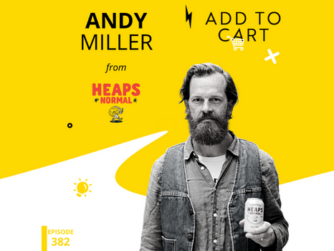In this episode of Add To Cart, we are joined by Justin Hillberg, Managing Director of Surfstitch. From being the innovative leaders and market darlings of the ASX, to going through voluntary administration and now back to profitability, Justin has led his team at Surfstitch through it all. In this chat he shares his views on everything from how discounting is not ideal, but there are ways to do it effectively to how they are helping other retailers get off the ground with their own marketplace and why they are moving into homewares and beauty under the SurfStitch umbrella. Finally, Justin gives us insight into what it looks like when a business goes through the wild ride of administration and how he kept the team together throughout it all.
“We were all really passionate and riding the wave…it was such an exciting business to be a part of“
Justin Hillberg
Questions answered in this episode include…
- How did you navigate through the uncertainty of voluntary administration and come out the other side?
- What is an email address worth to you in dollar value?
- How do you manage the presence of your own brands alongside other brands that you sell?
Leading SurfStitch through highs and lows
So I started with SurfStitch in January 2014 and at that time they were majority-owned by Billabong. They were pretty eager to split from Billabong, so we were in a process of building out the senior management team and trying to raise capital, purchasing back the stake from Billabong.
I joined at a pretty pivotal period in the business. The fundraising looked pretty successful. We raised over 60 million in a pre-IPO raise. Using these funds, we purchased back the SurfStitch portion from Billabong and at the same time, we purchased Swell from them too, which was the North American e-comm business. We purchased Surfdome off Quicksilver, and out of the UK. That really gave us a global footprint to head into the IPO, and create the global e-comm action sports narrative.
We were all really passionate and riding the wave and it was such an exciting business to be a part of back then. I bounced over to the U.S. and was helping run the Swell business over there that we needed to do a lot of integration. I spent time in the UK and the Surfdome business understanding that, and we were working on this big global project to stitch all of the businesses together and have one global platform, one global brand. It was really exciting.
But as quickly as it all built up, it actually was also a curse. We didn’t realize it at the time, but we were trying to do a lot and we had a lot of people, the business was quite big and it was global and we just couldn’t move as quickly and efficiently as we tried to and it started to break. There were pressure points along the way. Our CEO was really passionate about hitting certain milestones as were everyone in the business. But I think we didn’t put enough emphasis on just executing the strategy, slowing down, doing things properly, thinking things through, stress testing some of our thought processes, we just were just sprinting at everything. And while that sounds fun and it was fun, it had its issues.
It wasn’t like we were brand new startups anymore. The Swell business was actually the oldest business in the group. It launched in 1999. So, it wasn’t like you were working with startups that were getting a hundred percent growth a year anymore. We were starting to hit that maturity curve and growth was getting tougher. Year on year comps were getting harder and our plans hadn’t changed, they were still really high growth profile models. So the pressure cracks started to show through that period.
It just started to sort of spiral. We backed out of a lot of contracts. We backed out of all sorts of things where you revised our full year guidance. The share price started to tumble and once it starts to tumble like that, it was hard to recover. And the biggest issue with that whole process was we raised $50 million in three months before the CEO resigned and we raised it at $2 a share. So raise that at $2 a share and then the share price quickly dropped to 30 cents. So we lost close to half a billion dollars in five months off the market cap. Yeah, it was a big fall and a really tricky time to be leading one of the biggest businesses.
Making the best of returns
We run a pretty lean return rate. I think there’s a number of reasons which build into that. We try and do as good a job as possible with our product content. So, really clear photography, you can zoom in the product, content’s simple, easy to understand. We tend to sell brands that are household names. So normally if you’re buying a Billabong t-shirt or some Rip Curl swimmers, you’ve probably got a version in your cupboard so you know what size you are. We’ve got a relatively low free shipping threshold. So we’re not kind of encouraging people to just increase their basket size to get free shipping. We found in the early years we were doing that, we got free shipping over a hundred dollars, back in the day. And we found that people would just go all out, get two sizes of that one dress and then get the free shipping. And I know I’ve got free returns, so I’ll just return the one that doesn’t work. So we found if we dropped that free shipping threshold, then customers were more confident to say I’ll try the eight or I’ll try the 10, or we’ll try this 32. And then we had less return rates on the back of that. We would sit just under 10% returns, which is pretty good for a fashion apparel business.
What we’ve managed to do over time, it’s just slightly increased. The friction is a real fine balancing act between how much friction is acceptable and how much friction is a pain in the ass. And it doesn’t mean you’ll go back. So, we used to put free shipping labels in every order, so that it was so easy where you’re almost encouraging customers to return stuff. So we stopped doing some of that. We removed all the paper. You now have to log on, put your order details in there and log your reason, get an approval code and then print out a form, to stick on. So we just added a few extra steps. It gives us more intelligence, saves paper and wastage and means you’ve just got to work that little bit harder to do the return.
I think if you’re on the fence with ordering something, sometimes a really good returns process just takes that risk out of it for the customer. So it often is the difference between a customer ordering something then and there or saying, you know what, I’m going to go into store and check that out. I’m going to do a bit more research. So, you can’t underestimate the value of a really strong returns policy, but also a good process. And we’ve got work to do on our returns process as well. We’re actually building out a custom portal in our platform so that customers can make that returns process a lot easier from their side too.
Gold Coast base and flexible working
We love it. We’ve been here a while and there’s a lot of pros. It’s very much in line with our DNA. Our brand’s purpose is to inspire our customers to live like it’s the weekend. So, there’s no better place to embody that than on the Gold Coast. I think there are some benefits to it, we’ve had really good employee retention over the years. I think there’s probably a couple of a period there where it’s gone the other way, but on the whole, we’ve had really good employee retention. I think if you’re a decent sized business that looks after your people and you’re based on the Gold Coast, there are not that many other options for the crew to go.
There was a period where I worked in Sydney a couple of years ago. I was down there once a fortnight for a couple of days a week. That worked back then and I think there’s some level of normality to that now. A lot of people are working remotely a hundred per cent over Zoom.
But as an example, we were working from home for a couple of months last year. When we came back into the new office, it was in a new location, not that far away, but we went from Burleigh to Broad Beach. So an extra half an hour North on the Gold Coast highway and there were a few of our employees that said, you know what we would prefer the flexibility. It’s been really good for my family and work-life balance. So, we’d like to do one to two days at work a week from home. So we trialled that and it’s been really good, really successful. The employees have been happier when they are here, they dig in, and I feel like they work harder.
So you’ve got an onsite workforce that’s super engaged. I feel like when they’re home, they work harder. So when they’re at home, they’re kind of earning it. Overall, I think the workforce is more productive. We’ve done a bit of recruitment recently, we’ve been doing interviews this week, interviewing a lot of young people and it’s been really interesting. Some are asking about flexibility policy and what’s our stance on environmental sustainability and social responsibility?




